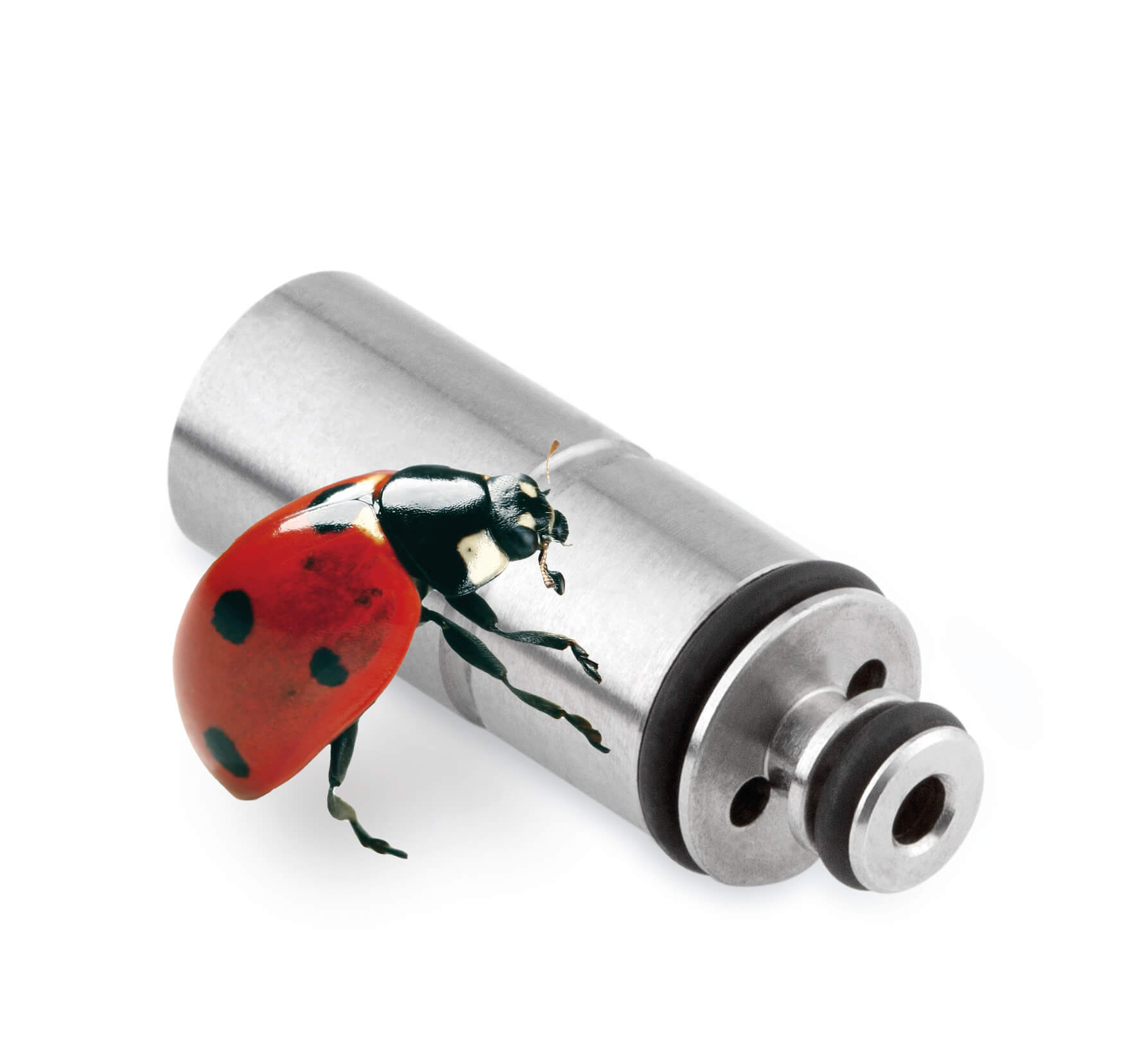Information and basic properties from the fluid technology specialist on the topic
of
Microvalve - Information, applications, manufacturers

What is a microvalve?
Microvalves are particularly small components in the field of fluidics and microfluidics to control gases or fluids. The outer dimensions are usually less than 10 mm. Due to their small size, these valves are relatively light and are especially well suited for mobile or portable applications and can be integrated particularly well into higher-level systems. In addition to passive microvalves, such as check valves, there are also active microvalves that are electrically controlled. To do so, electromagnetic drives are typically used, which are very fast and inexpensive.
How does a microvalve work?
Just as in the world of larger solenoid valves, microvalves are also divided into pure switching valves and true proportional valves. A 2-way microvalve only opens and closes a fluid channel completely, while a micro-proportional valve also can open or close a fluid channel partially and thus can precisely meter a gas or fluid. In particular, fast-switching and long-life microvalves capable of switching below one millisecond can also be used for so-called quasi-proportional control and replace real proportional valves. The service life requirements for these applications are typically well over 1 billion operations.
Where are microvalves used?
Microvalves find their place in many different areas and are an integral part of our everyday life. These miniaturised valves are also frequently installed in places where you would not initially expect them.

Microvalves as a pilot valve
more_vertMicrovalve pneumatics
Microvalve fluidics
A traditional field of application for microvalves is, for example, the use as a pilot valve or relay valve in larger control valves of industrial pneumatics, with a small microvalve controlling a much larger valve.
Read more...

Microvalves for inkjet printers
more_vertMicrovalve pressure
Microvalve inkjet
In industrial inkjet printers, microvalves with very precise openings ensure that the micro-colour dots end up in the desired location.
Read more...

Microvalves for cold gas propulsion
more_vertMicrovalve cold gas
Microvalve vacuum
The smaller and lighter the satellites in space, the greater the demand for small system components of these satellites, such as cold gas propulsion systems (control nozzles), used for manoeuvring a satellite in orbit.
Read more...

Microvalves for petrol injection
more_vertMicrovalves petrol
Microvalve engine control
In small combustion engines, such as in saws or motorcycles, microvalves in conjunction with an electronic motor control ensure that in each case the right amount of fuel is metered into the carburettor or the motor.
Read more...

Microvalves for in vitro diagnostics
more_vertMicrovalve fluid
Microvalve gas
During an in-vitro diagnostics procedure, tiny amounts of fluid are being taken from samples in the laboratory using fully automated sampling systems. These are then mixed with reagents and the results are analysed.
Read more...

Microvalves for fuel cells
more_vertMicrovalve hydrogen
Microvalve natural gas
Microvalves are used especially in small, portable fuel cells, where only small amounts of natural gas or hydrogen must be metered into the fuel cell.
Read more...

Microvalves for flow control
more_vertMicrovalve flow regulator
Microvalve control technology
Electronic flow regulators provide fast microvalves to keep a defined flow rate for gases or fluids.
Read more...

Microvalves in vacuum grippers
more_vertMicrovalve gripper arm
Microvalve robotics
An increasing number of vacuum grippers are used in industry to help people lift and move heavy boxes or other objects. Here, a so-called vacuum gripper is attached to a load crane.
Read more...

Microvalves for pressure regulators
more_vertMicrovalve air
Microvalve water
In electronic pressure regulators, fast-switching microvalves ensure that a defined pressure corridor (maximum pressure and minimum pressure) is not exceeded or values do not fall below the target.
Read more...
What should I know before buying microvalves?
Everything you should know before purchasing microvalves can be found on our compact overview page.


